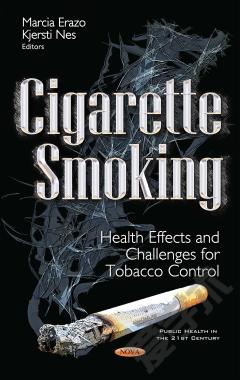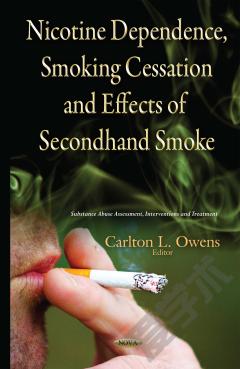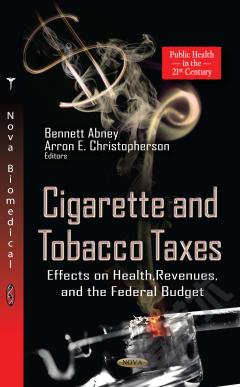Cigarette Smoking: Health Effects and Challenges for Tobacco Control
Tobacco smoking is a major public health issue worldwide. Smoking causes more than a quarter of all cancer deaths, with nearly 80% of deaths from lung cancer, 80% of deaths from bronchitis and emphysema and almost one fifth of deaths from cardiovascular disease. The role of tobacco smoke in the development of cancer, cardiovascular and respiratory diseases is widely discussed in the chapters of this book. It is responsible for many preventable diseases, contributes to a large number of premature deaths and accounts for enormous economic costs. The chapters in this book review a variety of topics related to the sociodemographic characteristics of people consuming tobacco, tobacco product promotion and merchandising consequences of smoking on health, the studied mechanism of damage and the different interventions promoted for tobacco control. The mechanisms by which cigarette smoke affects health are diverse. Thousands of chemical components — mainly toxins and carcinogens — are part of tobacco smoke. These components could act through specific or nonspecific mechanisms in the development of cancer, cardiovascular and respiratory disease. Common pathways include DNA damage, gene mutations, vasomotor dysfunction and oxidative stress, among others. The effects on health of first-hand and second-hand smoke exposure have been widely studied, and there is growing evidence regarding consequences of third-hand smoke exposure. The constituents, dynamic transformation and distribution of third-hand smoke are a fruitful area of study, as much as the quantification of its exposure. In this book, many useful indicators of exposure to environmental tobacco smoke, ranging from surrogate indicators to direct measurements of the components that reflect dose are analyzed. Advances in this field can provide useful information on the extent and effects of smoking, implementing and assessing tobacco control policies. Furthermore, the World Health Organization developed a framework for an international treaty that provides evidence-based recommendations for health promotion and tobacco control. After more than ten years of its implementation, the effectiveness of different strategies adopted worldwide is analyzed and reflections on the new challenges of its implementation are presented. In this book, smoking is reviewed pertaining to the effects and implications for health, as well as the current challenges on implementation and evaluation of tobacco control interventions.
{{comment.content}}








 京公网安备 11010802027623号
京公网安备 11010802027623号